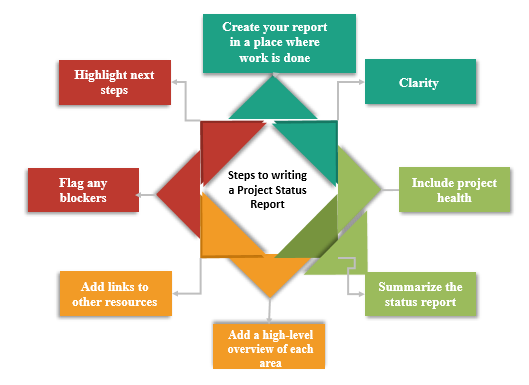Steps To Writing A Project Status Report
A project status report is a necessary document for any project-based business. It outlines the current state, including what has been completed, what is in progress, and what still needs to be done. This document serves as a tool for tracking the progress of a project and as a communication vehicle between stakeholders. Implement the following steps to create an effective project status report.

1. Create Your Report In A Place Where Work Is Done - Make sure you're already tracking your work data before creating your report. You won't have to manually gather data from a variety of sources. Instead, you'll save time and effort by creating a report with just a few clicks.
2. Clarity - Be specific and name your report to give clarity. If you are reporting the status regularly, make sure to include the date or timestamp.
3. Include Project Health - The current wellbeing of a project is related to its health. The project health may change from different milestones, especially if you encounter roadblocks or must unblock major project risks. A color-coding scheme (green = on track, yellow = at risk, red = off track) is one approach to do this.
4. Summarize The Status Report - The summary of your project status report should be no more than 2-3 sentences long. The purpose is to provide a fast summary of the most significant facts for readers who may not have time to read the complete report. Because this is your report's opening part, it's the greatest spot to:
- Highlights should be included.
- Major roadblocks should be highlighted.
- Take note of any unanticipated project risks.
5. Add A High-Level Overview Of Each Area - Summarize the project goals, identify any recent updates or changes, and highlight any major milestones that have been achieved. For example, you'd probably employ dynamic key areas to cover the items your team worked on during the previous sprint. On the other hand, for an event planning effort, there are a few important areas that you should always address, such as promotion, signups, and speakers.
6. Add Links To Other Resources - While your status report should not be too detailed, some people will be curious to know more. So, provide links or references for stakeholders who want to see the root cause of any issue.
7. Flag Any Blockers - No matter how smooth the project is running, there will always be a roadblock at any stage. These can take the shape of project hazards, budget overruns, or delays that cause the project's timeframe to be pushed back. Keeping stakeholders updated allows everyone to adapt to the change to stay on pace whenever challenges occur.
8. Highlight Next Steps - This includes a list of future objectives, accomplishments of anyone among our team, lessons learned, or anything else you want to highlight could be included.



